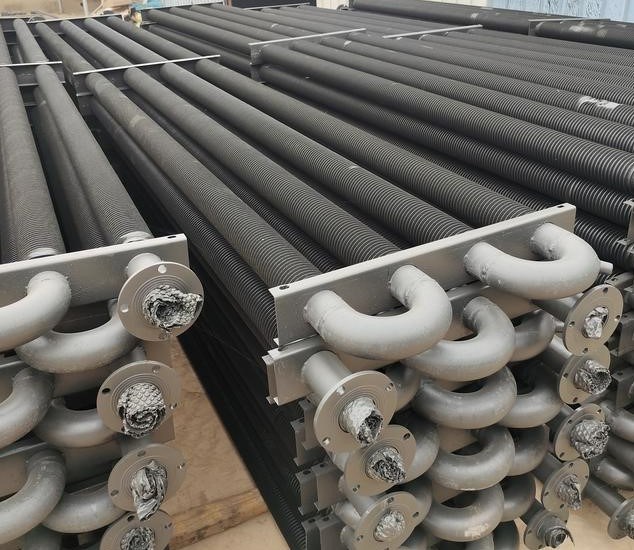The heat exchange unit composed of multiple finned tubes arranged according to certain rules is called finned tube bundle. A finned tube heat exchanger can be composed of one or more finned tube bundles. Understanding the finned tube bundles is helpful to the application of finned tube heat exchangers.

What are the components of finned tube bundle?
1. Multiple finned tubes: basic elements of heat transfer;
2. Tube box header or tube plate: connect the box, elbow or steel plate at both ends of the finned tube. When the finned tube is connected with the box or tube plate, the spacing between the finned tubes is fixed, and the tube box makes the fluid in the tube form a continuous flow channel;
3. Frame: support and fix the whole finned tube bundle.
The finned tube bundle is the main part of the air cooler, which is composed of finned tubes, tube boxes and frames. It is an independent structural whole. Its basic parameters include the tube bundle type (usually horizontal type, inclined top type, etc.); Working pressure and temperature, fin tube type and specification; Type of tube box, length and width of tube bundle, number of tube rows, number of tube passes, etc.
Finned tubes are also called extended surface tubes, which can have shells or not. Finned tubes are processed with many fins on the original tube surface, both on the outer surface and the inner surface, so that the original surface can be expanded to form a unique heat transfer element.
Finned tubes are widely used in power, chemical, refrigeration and other industries. They are mainly used in air coolers, which can reduce industrial water shortage and environmental pollution of industrial water. In terms of heat transfer enhancement, low ribbed screw tubes and micro ribbed tubes are widely used for phase change heat transfer in evaporation and condensation.
 What are the components of finned tube bundle?
What are the components of finned tube bundle?
Comments
Post a Comment